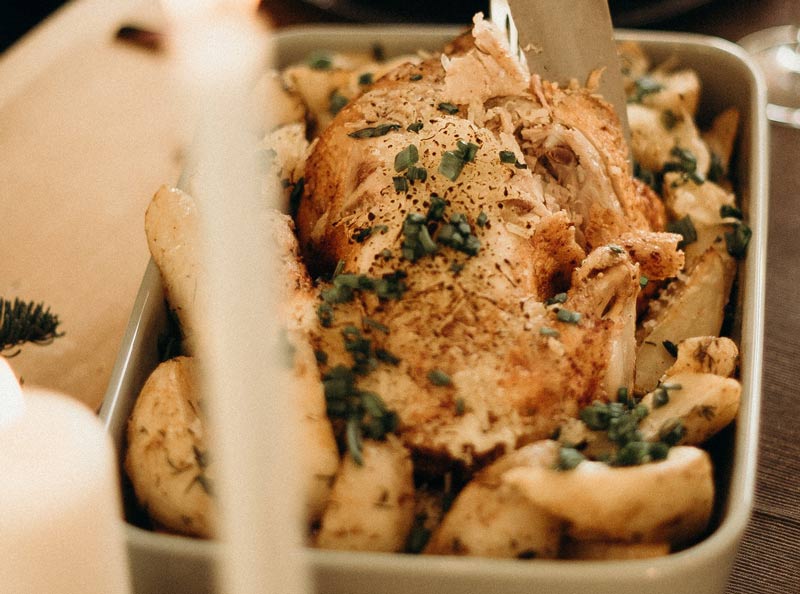When Thanksgiving rolls around, it is only natural that our thoughts turn to food. After all, Americans eat up to 80 million pounds of cranberries at Thanksgiving (to be clear, that is a cumulative—not an individual—total). And cranberries are not even the star of the show.
Making the Right Nutritional Choices
Since we are thinking about food anyway, it is a great time to think about good nutrition, too. Good nutrition can provide a significant boost to your recovery. Let’s take a trip around the Thanksgiving table.
Let’s Talk Turkey—The Importance of Lean Protein
It turns out that the traditional Thanksgiving main dish is an excellent choice for healthy eating. Lean proteins like turkey or chicken or fish should feature prominently in your daily eating throughout the year. You can also find protein in beans or nuts (this is important to remember if you are a vegetarian or vegan). And including some red meat in your diet is just fine, too.
Simple Rule—Keep Your Carbs Complex and Grains Whole
Are mashed potatoes on the Thanksgiving menu? How about stuffing? There are opportunities here to make good choices to support your health.
When it comes to potatoes, dark-skinned varieties are the way to go—and ideally, you would eat those nutrient-rich skins (and yes, you can leave the skins on when you mash potatoes). As for the stuffing, focus on whole grain bread rather than white bread. Whether it is a holiday or just a regular day, you want to get complex, rather than simple, carbohydrates into your diet.
Don’t Be Drab—Enjoy a Range of Colors
When it comes to the side dishes, every family has their own traditions. The important thing to keep in mind is that colorful fruits and vegetables—including a commitment to getting plenty of leafy greens—are central to healthy eating. So don’t shy away from the green beans or the mixed green salad or even the banana croquettes (if that happens to be your thing) when you are sitting down to Thanksgiving dinner or any other dinner throughout the year.
It Is Not About Loosening Your Belt—The Importance of Fat
When it comes to the word “fat,” the connection to Thanksgiving may seem all too obvious. We eat too much, and we feel fatter than when we first sat down at the table. But that isn’t what we mean in this case. Instead, we want to encourage you to pursue good fats—and avoid bad fats—in your diet.
Admittedly, good fats tend to be found in food we do not generally associate with Thanksgiving (though we won’t judge if you vary or expand the menu). These good fats, which bind with a variety of nutrients and provide Omega fatty acids that can aid in the repair of damaged tissue, can be found in avocados, eggs, fish, some cheese and nuts, and dark chocolate (maybe you can swap out a pumpkin pie for a dark chocolate dessert).
The fats you want to avoid are often found in processed food, so your best choices are always fresh, whole foods.
Why It Matters—Give Thanks for Good Nutrition
Good nutrition is, of course, important for everyone. But for a person in recovery for a substance use disorder, it can play a crucial role. Eating right can go a long way toward repairing damage the body may have suffered during a person’s use of drugs or alcohol. Making healthy choices can also help lessen cravings—which can be especially strong in the early days of recovery—while improving an individual’s overall sense of well-being. Improvements to your physical health can also boost mental health, and that is also an important part of maintaining hard-won sobriety.
Long and short: healthy eating is all upside with no downside. And if that isn’t something to be thankful for, we don’t know what is.
We Can Help You Get On Track
At French Creek Recovery Center, we know that overcoming a substance use disorder is a serious challenge. That is why we are committed to personalized, compassionate care that will provide you with the resources and support you need to start your recovery journey with confidence. If you are struggling, we would be thankful for the opportunity to help you get your life back on track.

